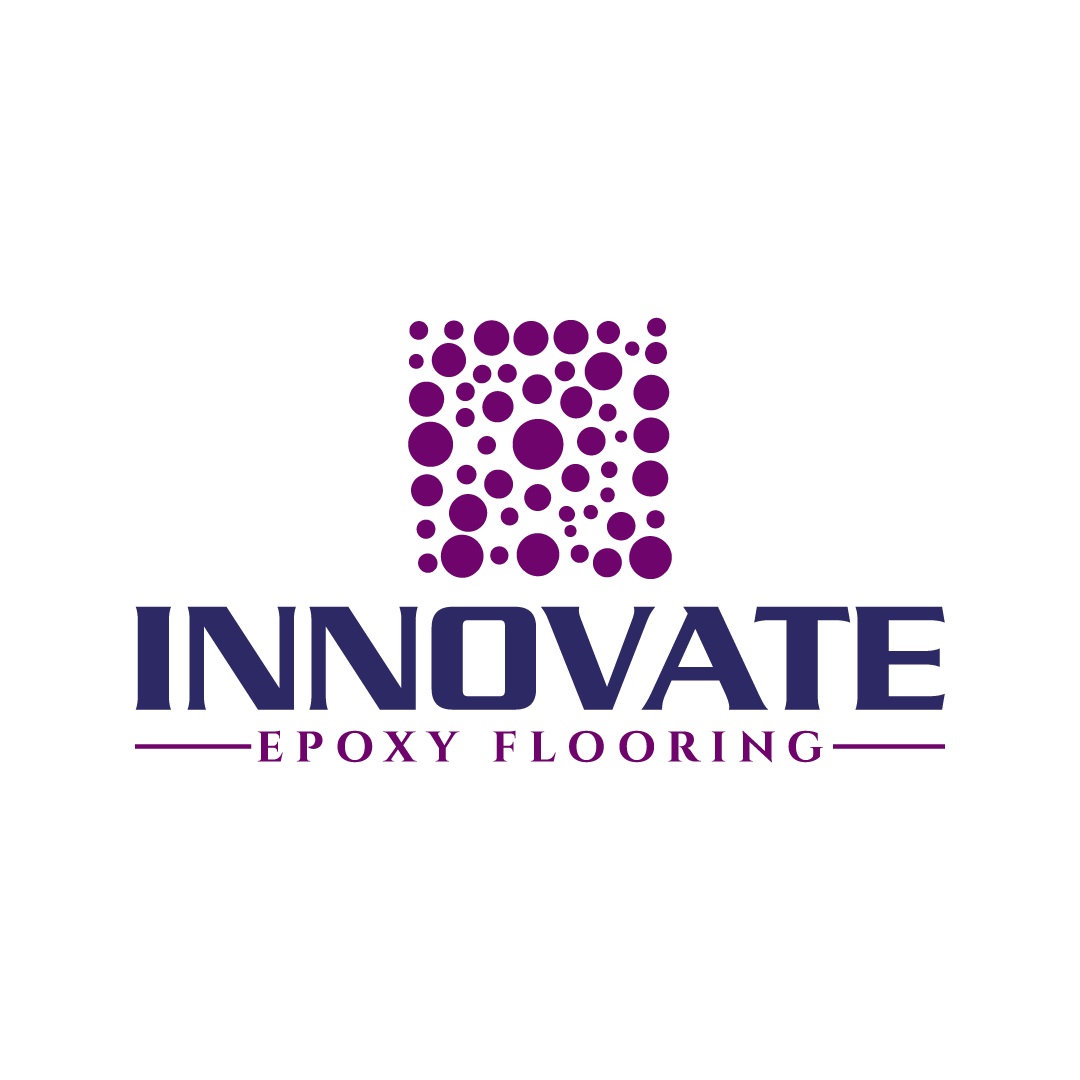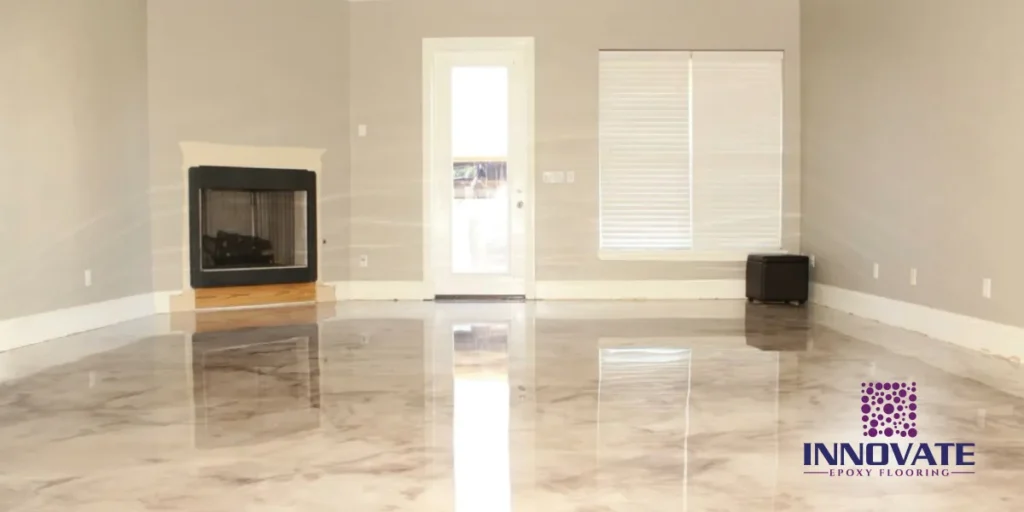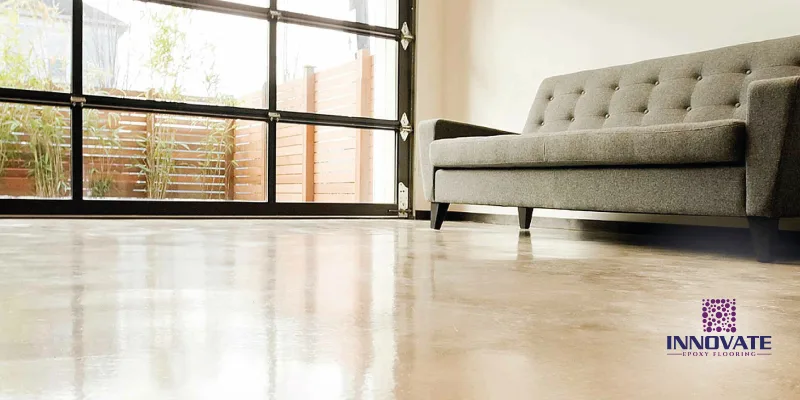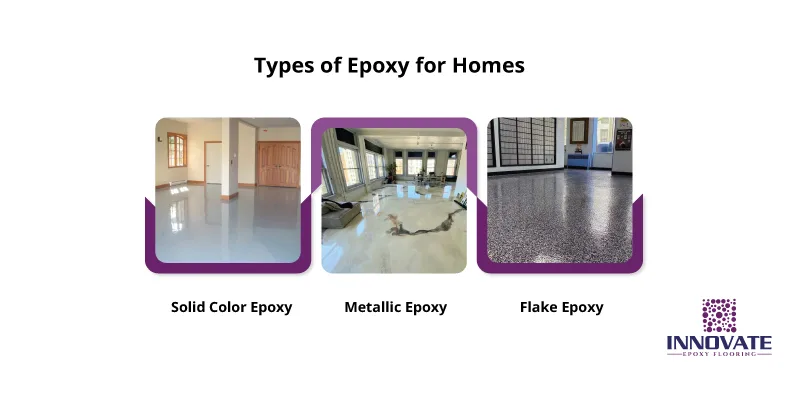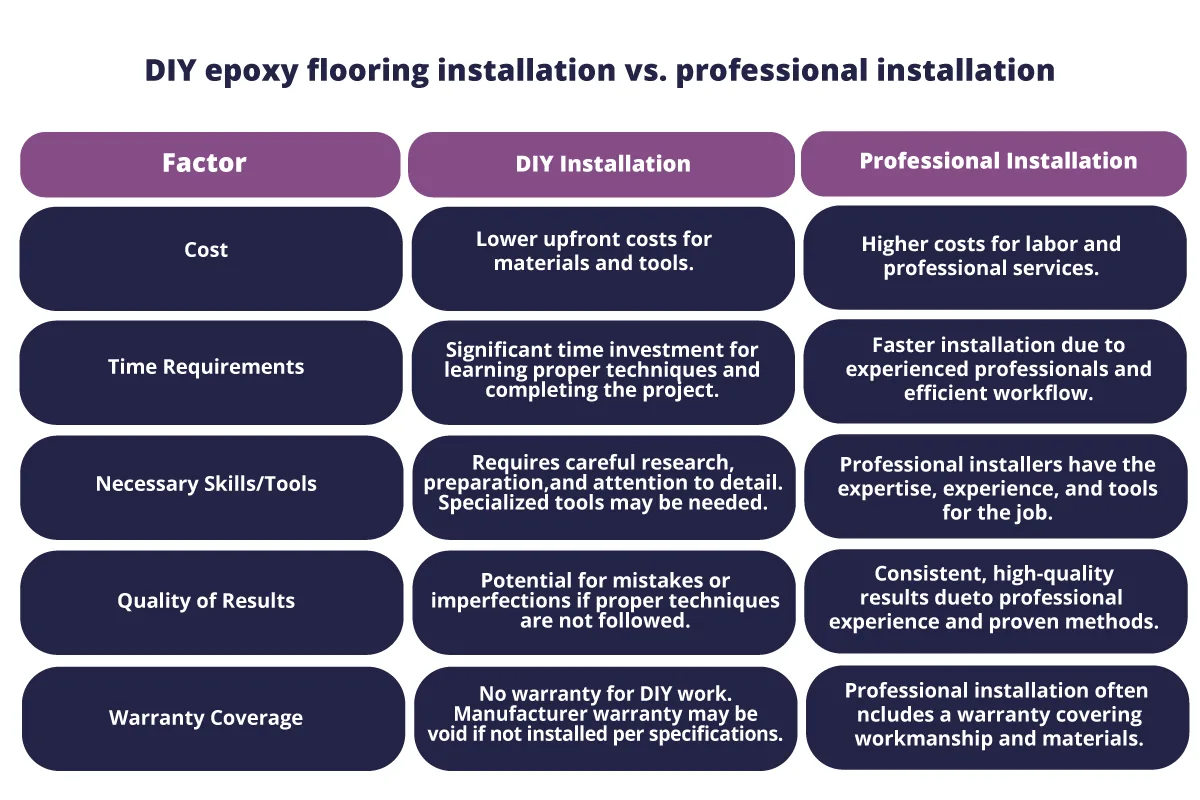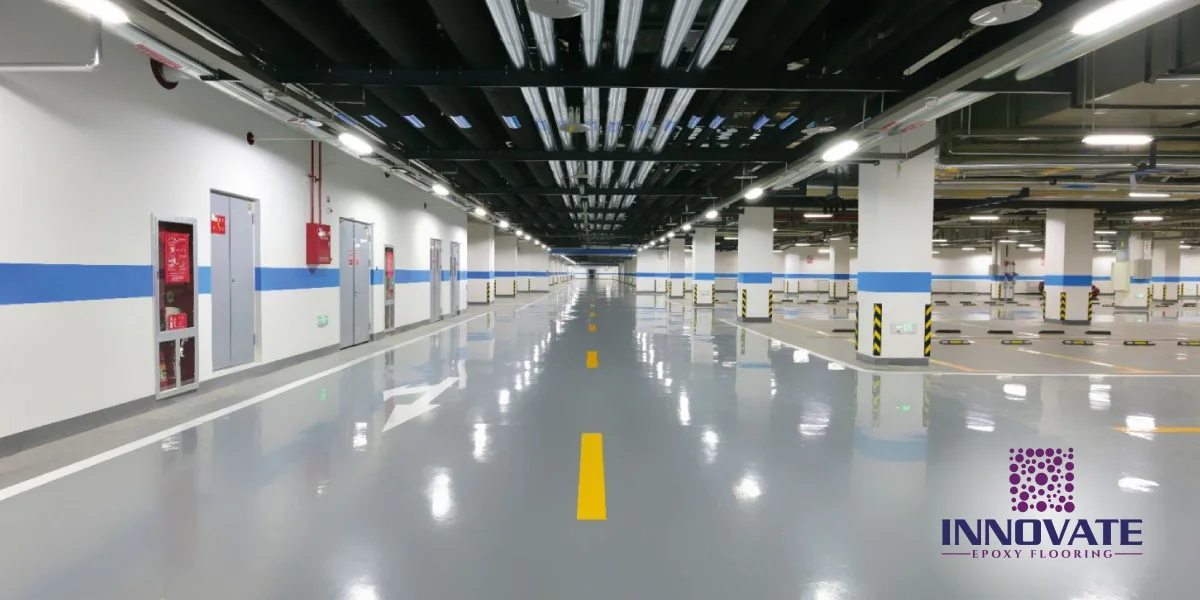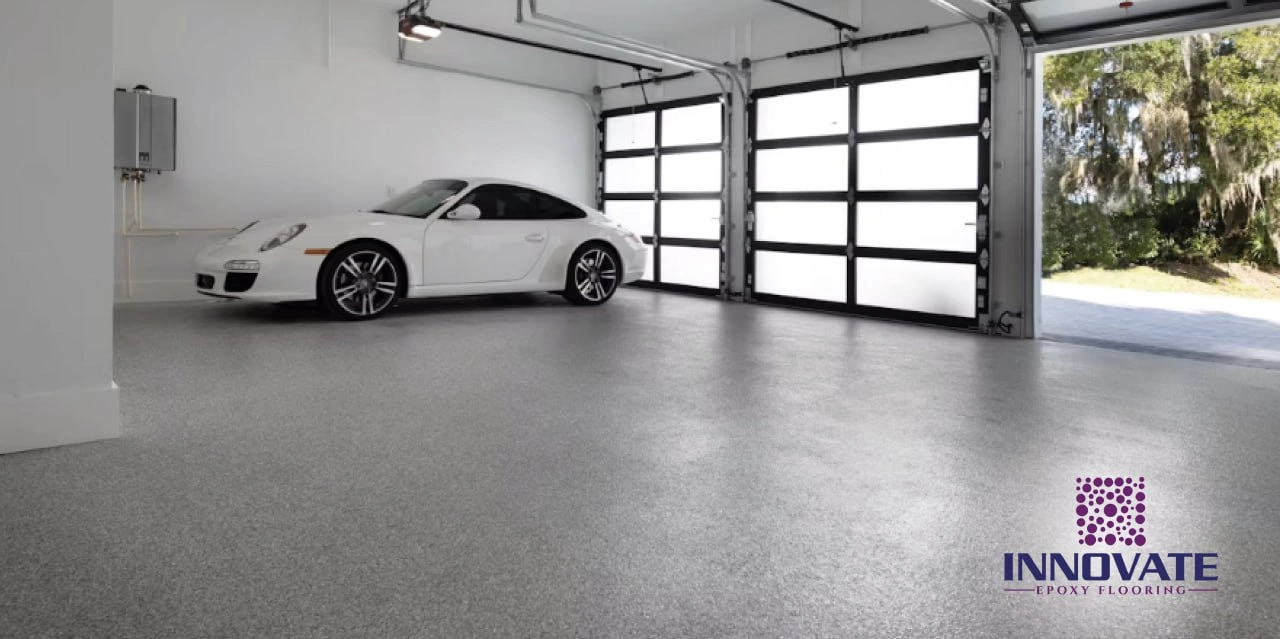Home epoxy floor demonstrates exceptional strength that lasts many years. These surfaces show excellent resistance to both stains and impacts together with chemicals and surface abrasion. The easy maintenance of epoxy floors includes their ability to stay clean without much effort.
What is Epoxy Flooring?
Epoxy serves as one of the coating systems. A resin and hardener form the basis of a home epoxy floor through their mixture. Two chemical compounds mix to produce a solid plastic surface when resin combines with a hardener.
A plastic coating formed from the mixture goes on top of concrete, wood, tile, and additional floor surfaces. The mixture undergoes chemical reactions to achieve a final state as a smooth, durable, seamless floor surface.
Benefits of Epoxy Flooring for Homes
Makes Floors Look Great
Home epoxy floor uses concrete to generate beautiful, colorful surfaces that enhance dull concrete floor appearances. The flooring system offers multiple color choices and design variations that customers may pick from. If you select metallic epoxide compounds, your flooring will exhibit a metallic sheen with a subtle sparkle or glittery appearance. The appearance of Flake epoxies features random speckled texture.
Protects and Preserves Floors
Epoxy coatings perform two functions; they protect concrete floors from moisture damage and chemicals as well as visual damage due to stains and wear-and-tear. Your floor’s longevity extends automatically while maintaining its attractive state without needing extensive maintenance. Customers find epoxy flooring an economical solution to transform their home flooring.
Offers Durability and Longevity
Home epoxy floor coatings maintain their functionality as some of the most enduring flooring solutions in the market. Epoxy floor coatings that receive proper installation work for 10 to 20 years as residential floors until they require replacement or recoating. The epoxy material exhibits strength by protecting against cracking and peeling while also defending against chemical corrosion and impact strikes.
Provides Safety Features
The continuous epoxy surface gives simple maintenance while blocking bacterial, mold, and germ growth. The installation of epoxy floor coating leads to an environment that is more hygienic and sanitary. When mixed with epoxy additives, the optional anti-slip agents provide surfaces that stay safer under slippery conditions.
Common Areas in the Home for Epoxy Flooring
Garage Floors
Home epoxy floor finds extensive usage in residential garages due to its popularity. Epoxy effortlessly survives heavy weight from vehicles and resists both oil spills and chemical leaks, as well as tools that get dropped and typical garage use disorders. Epoxy functions to shield concrete slabs from damage while additionally rendering a garage more clean and visually appealing.
Kitchen Floors
Epoxy proves to be the optimal solution for floors that need to be installed in kitchens. Epoxy allows for a non-porous flooring material that can be cleaned effortlessly. Fluid spills disappear instantly without hurting the flooring surface. Epoxy prevents bacterial and mildew growth, which results in better hygiene conditions for kitchen areas.
Bathroom Floors
Bathrooms benefit from using moisture proof epoxy flooring as a surface option. Epoxy material stands strong against both water-based damage and damage from toiletry products. The surface features an easy-to-clean design that operates without needing grout. Bathroom floors become safer for wet conditions when treated with anti-skid additives.
Basement Floors
A standard concrete basement floor becomes an aesthetically pleasing area suitable for living when epoxy coatings are applied. The cured state of epoxy makes it resistant to moisture damage that commonly affects basements. Epoxy basement flooring needs minimum upkeep while remaining easy to maintain in clean conditions.
Other Residential Spaces
Various areas, including laundry rooms, mudrooms, enclosed patios, driveways, and workrooms, are appropriate spaces for epoxy floor applications. Pre-existing concrete surfaces benefit from epoxy coatings because these installations simultaneously improve their performance, appearance, and durability. People choose decorative epoxy finishes that include metallic effects or decorative flakes for their living areas as well as bedrooms, home offices, and other interior spaces that need aesthetic enhancements.
Types of Epoxy for Homes
Solid Color Epoxy
Basic epoxy flooring consists of a single uniform color. The clear epoxy base receives a color pigment to reach the desired finish. Solid colors present in epoxy bases include both basic neutrals and bright neon that exists in various levels of opacity or translucency.
Metallic Epoxy
Epoxy systems achieve exotic swirling along with mottled or marbleized effects when metallic powder pigments are mixed into the epoxy to create high-gloss sheen effects. Metallic floors give upscale modern appearance while creating fascinating visual effects that draw immediate attention. Different metallic pigments in the mixture produce unique eroding patterns with each application.
Flake Epoxy
A base epoxy coat receives broadcasted colored chips or flakes. Steps to install these flakes consist of adding color and texture alongside reducing surface slip while enhancing floor appearance. Flake floors present a flawless granite appearance thanks to their ability to accept distinct flake arrangements and range of flake colors and sizes.
Installation Process
Preparing the Floor
A successful application of home epoxy floor requires the existing flooring materials to undergo proper preparation before the process begins. A complete cleaning operation must be followed by repairing damaged and cracked surfaces. A process of grinding or shot blasting achieves the proper floor structure for epoxy attachment.
Mixing the Epoxy
Special care is applied during the mixing process when the epoxy resin meets its hardener component at the right specifications. The stage includes mixing color pigments alongside other additives into the mixture.
Applying the Coating
The prepared floor receives an even distribution of mixed epoxy through the use of rollers and squeezers. Before introducing decoration elements, the floor receives its chips or flakes. The coating smoothly adjusts its position until reaching its curing state.
Curing and Sealing
The epoxy must cure for several days until it reaches maximum durability and final hardness. Additional protection and improved sheen can be achieved through the application of a clear final coat. Routine heavy traffic on the epoxy should wait until its complete curing stage.
Maintaining Your Epoxy Flooring
Sweep Regularly
Use a soft-bristled broom, dust mop, or vacuum to eliminate loose dust and debris from the home epoxy floor. Sweeping your floor regularly will stop rough particles from causing finish damage or creating scratches.
Mop When Needed
Apply a mixture of clean water or a diluted mild soap to mop the floor after deep cleaning needs arise. Strong chemical cleaners that could harm the epoxy surface must be completely avoided.
Wipe Up Spills
Quickly address all spills on epoxy surfaces. Blot the spilled substance with a gentle cloth to keep it contained instead of allowing it to spread. Rinse the area with water afterwards.
Use Doormats
Entry mats positioned at door entrances will collect outside dirt and moisture so they cannot reach the epoxy flooring. The floor requires fewer cleaning tasks.
DIY vs Professional Installation
The application of home epoxy floor coating follows multiple steps that need detailed precision and the appropriate tools for successful completion. Most homeowners prefer hiring professional installers because they guarantee correct execution of the project.
Benefits of Professional Installation:
- Professionals possess the necessary education and equipment to perform correct floor preparation techniques.
- The correct execution of epoxy mixing and application steps leads to optimal outcomes.
- Installers with experience are able to develop intricate decorative effects when applying finishes.
- The installation service includes warranty protection against damaged work.
- The process eliminates both time requirements and complex difficulties found in DIY building work.
Final Thoughts
Home epoxy floor provides an exceptional solution for improving concrete floors by both increasing their appearance and functionality. Various fashionable and colored epoxy floor systems exist to meet the needs of every residential space. You should work with a professional installer to obtain both top-notch results and durable floors that require little maintenance for extensive use.
FAQ:
-
How long does epoxy flooring last?
Appropriate installation combined with proper maintenance enables residential epoxy floors to last between 10 to 20 years until a replacement becomes necessary.
-
Is epoxy flooring slippery?
Epoxy flooring becomes slippery in wet conditions, but companies provide compatible anti-slip additives, which users can add during the epoxy mixing process for increased slip prevention benefits.
-
How do I clean my epoxy floor?
The floor cleaning process involves regular sweeping or vacuuming followed by mild solution mopping when necessary. The use of strong chemical solutions should be avoided to protect epoxy flooring from damage.
-
Can I install epoxy flooring myself?
You can install epoxy flooring by yourself, yet you need to follow proper preparation techniques and utilize adequate tools along with close attention to details. Most homeowners decide to work with experts because they want professional outcomes.
-
Is epoxy flooring a good choice for my kitchen?
Epoxy stands as a perfect selection for kitchen flooring applications. The combination produces an easy-maintenance surface that delivers smooth, impermeable protection against moisture entry as well as keeping out stains and bacteria.
